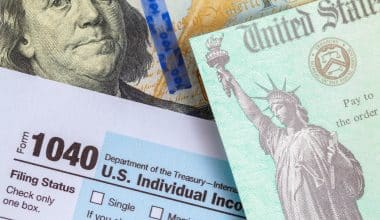Withholding allowances are a type of exemption that limits the amount of income tax that an employer withholds from a worker’s paycheck. Employees in the US typically calculate and claim their withholding allowance using IRS Form W-4: Employee’s Withholding Certificate. Less income tax will be deducted from an employee’s paycheck if they claim more allowances and vice versa. Employees are eligible to claim withholding benefits in some states. W-4 forms
Allowances
Allowances are monetary benefits that an employer provides to an employee in addition to their base pay. These benefits are offered to cover potential costs incurred to make it easier for employees to perform their duties. Less income tax will be deducted from your paycheck the more you claim, and the opposite is also true. Every time an individual’s personal or financial situation changes, they must submit a new Form W-4. Withholding allowances directly affects the amount of your final paycheck.
In other words, the more tax deductions you claim, the less income tax you pay; conversely, the more tax deductions you claim, the more income tax is deductible. The amount of your refund might, however, increase if you claim fewer allowances. Depending on their circumstance, filers typically have the option to claim zero to three allowances.
Withholding Allowances
Withholding allowances are exemptions that lower the amount of income tax that an employer withholds from a worker’s paycheck. You can make calculations and claims for withholding allowances using IRS Form W-4. The amount of withholding depends on the taxpayer’s filing status (head of household, married but filing separately, married but filing jointly, or single or married but filing separately), how many withholding allowances they claim, and their filing status.
When someone is hired by a business, they must complete Form W-4, which asks for personal information like their name and Social Security number. It also includes how many allowances need to be made. The employer uses the W-4 data after the information is filled out to decide how much of the employee’s pay should be deducted from their paycheck and sent to the tax authorities.
The total number of tax deductions a worker can claim is crucial because the more deductions, the less income tax that an employer will withhold from a paycheck; conversely, the fewer deductions, they will withhold tax. The amount of withholding depends on the W-4’s claimed to withhold allowances as well as the taxpayer’s filing status, which can be either single, head of household, married but filing separately, married and filing jointly, or married but filing jointly.
Choosing the appropriate number to submit for reimbursement is crucial. This is to prevent tax-filing issues or to prevent overpaying taxes and then receiving the money back from the government as an interest-free loan.
Calculating Withholding Allowances
The IRS offers a general formula to help taxpayers determine how many exemptions to claim so that the employer can withhold the appropriate amount from each paycheck. The withholding allowances depend on a person’s ability to claim dependents, how many jobs they hold, or whether their spouse has a job. If an employee is single, has no children, and elects the standard deduction, they are eligible to claim two withholding allowances in total—one for themselves and one for any dependents they may have.
In contrast, if a taxpayer is married filing jointly, and has no children, they can claim three deductions: one for themselves, one for their spouse, and a third if they have only one job, if their spouse doesn’t work, or if either of their other jobs pays $1,500 or less.
It becomes more challenging when there are children or other dependents, and income determines the number an employer can claim. Thankfully, employees can use the IRS Withholding Calculator to confirm their withholding preference. They can use this to check if they’ve claimed the appropriate number of withholding allowances.
Allowances w4
Employers use the IRS W-4 tax form to calculate how much federal income tax an employer withholds from their employee’s pay. When you start working, you are to complete a W-4 and provide information on how many exemptions you intend to claim each pay period. It’s crucial to comprehend how many allowances you can claim on the W-4 form.
The number of exemptions you are eligible to claim can change due to events like the birth of a child, beginning a new job, or marriage. Your tax rates and standard deductions have an impact on your allowances. As a result of the assumption that married couples will have more expenses to pay for, you’ll notice that married couples receive higher allowances.
When there are more withholding allowances, income tax deductions are smaller, and when there are fewer exemptions, income tax deductions are higher. Employees who file their taxes as singles, for example, may choose to claim no benefits.
How Many Allowances Should I Claim?
If you are married and have one child, you are eligible to apply for three allowances. If you’re married and have two children, you should declare three or more exemptions because they qualify as W-4 exemptions. You may submit one claim for an allowance if you are single and work just one job. Additionally, if you’re single and work one job, you have the choice of asking for two allowances. This enables you to get relatively close to your break-even point. You should exercise caution, though, as this might necessitate paying some tax.
If you work two jobs and are single, you can claim two benefits at your first job and none at your second. Alternatively, you can split your allowance and apply for two of them—one at your first job and the other at your second. If you’re a single parent with one child, you can apply for two allowances. That is true if you are single and have a child as your only dependent.
If you only have one job and are a single parent of two children, you are eligible for more than two allowances. If you have more than two children when you’re single, you can ask for an allowance for each child. On the other hand, if someone declares you as a dependent on their tax returns, you are to receive only zero allowances. This deducts the majority of your taxes from your pay, possibly resulting in a refund.
What Are the Different Types of Allowances?
#1. Taxable.
You regard taxable allowances as a component of the salary and are not entirely or partially exempt from taxation under any sections or clauses of the Income Tax Act. This covers compensation for entertainment, deafness, overtime, interim positions, and projects, among other things.
#2. Non-Taxable.
Non-taxable allowances are benefits that employees receive from their employers that are part of their salaries but are exempt from taxes. Government workers typically receive these benefits. This covers expenses like rent, health insurance, special transportation needs, paid time off, and education, among others.
#3. Partially Taxable.
According to the Income Tax Act, “partially able” allowances are those that may be tax-free up to a specific threshold. Only a portion of these deductions is taxable. This includes government compensation, employee benefits, and other types of benefits.
What Are Allowances in Salary?
It is an additional payment that the employer makes on top of the base salary. Employees receive salary allowances for a variety of reasons, depending on their job description and designation. The majority of employers provide allowances to cover things like rent, travel costs, medical costs, overtime work, etc. for their employees.
The three main categories of salary allowances are taxable, non-taxable, and partially taxable benefits.
What Is the Basic Allowance in Salary?
An allowance in the workplace is extra money that an employer pays to a worker to cover costs or make up for particular working circumstances. For instance, many employees receive an allowance to cover the cost of entertainment or travel.
In some circumstances, employers may require employees to accept their allowances. As an illustration, companies occasionally give overtime-working employees a stipend to make up for the extra time they put in. The laws governing allowances vary by industry and the nation in which the business is located. If you have employees and believe they may require payment of an allowance, it would be a good idea to research your area’s labor laws.
Why Do I Have 2 Allowances?
Anyone who is single and works just one job has the option of claiming two allowances. This could speed up the process of reaching break-even, but it could also result in tax obligations. If you marry and want to split the allowances between your spouses, you can claim two exemptions. This is also an option for people who work multiple jobs and are single.
If you’re a single parent with one child, you can apply for two allowances. That is true if you are single and have a child as your only dependent. If you are a single parent of two children and only work one job, you are eligible for more than two allowances.
How Many Allowances Are Allowed?
It’s crucial to determine how many allowances are appropriate for your specific financial situation. Otherwise, you may end up owing the IRS more money at the end of the year or be subject to penalties for your error. Your filing status, the number of jobs you have, and whether you have any dependents all affect how many you are eligible to claim.
The maximum amount of benefits that employees may receive is conceivably unlimited.
Depending on your eligibility, you may be able to claim 0–3 allowances on the W4 IRS form. Generally speaking, the more allowances you request, the less tax your employer deducts from each paycheck. The fewer allowances you claim, the higher the amount of withholding that the IRS could refund.
Conclusion
It’s critical to make sure that the employer deducts the appropriate sum of money from each paycheck to cover federal income taxes. Employees who submit the incorrect number of withholding allowances may end up with a hefty tax bill or may end up giving the IRS money for free. You specify how much of your payment your employer should withhold from your paycheck on your W-4. You must therefore complete a new W-4 whenever you begin a new job or undergo a significant life change, such as adopting a child or when you marry.
Allowances FAQs
What Is the Basic Allowance in Salary?
An allowance in the workplace is extra money that an employer pays to a worker to cover costs or make up for particular working circumstances
How Many Allowances Are Allowed?
Depending on your eligibility, you may be able to claim 0–3 allowances on the W4 IRS form. Generally speaking, the more allowances you request, the less tax your employer deducts from each paycheck
What Are the Different Types of Allowances?
- Taxable
- Non-taxable
- Partially Taxable
Related Articles
- WITHHOLDING ALLOWANCES: What It Is, How It Works and to Calculate It
- Exemptions On Taxes: Tax Exemption Explained!
- ALLOWANCE FOR KIDS: Should Kids Be Given Allowance?
- HOW TO PAY LESS TAXES: Simple Ways to Pay Less Taxes Legally
- FIT TAX: What Is Fit Tax on My Paycheck?






